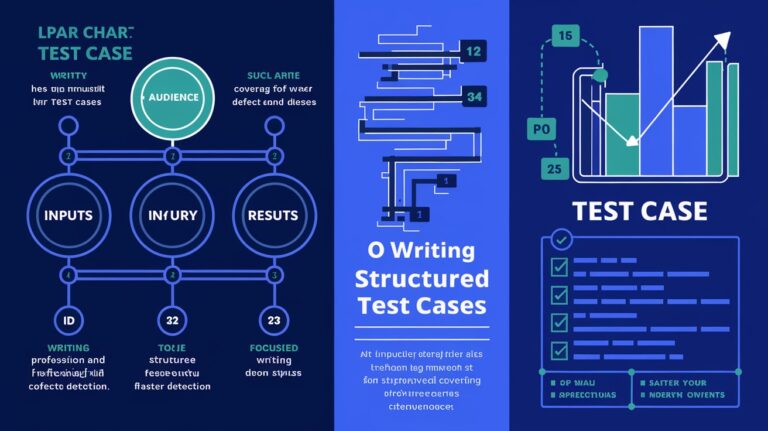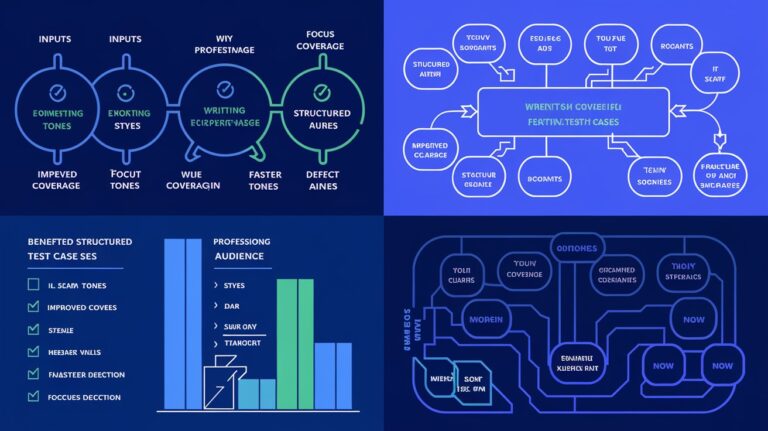Writing effective test cases is a critical skill for ensuring the quality and reliability of software applications. Well-written test cases make it easier to identify defects, validate requirements, and ensure that the application performs as expected. This guide will walk you through the process of writing clear, efficient, and actionable test cases.
Table of Content

- What is a Test Case?
- Why Are Test Cases Important
- Essential Components of a Test Case
- Step-by-Step- Guide to Writing Test Cases
- Best Practices for Writing Test Cases
- Common Mistakes to Avoid
- Conclusion
What is a Test Case?

A test case is a detailed set of instructions designed to validate a specific feature or functionality of an application. It defines inputs, execution conditions, and expected results to verify that the software behaves as intended.
Why Are Test Cases Important?

Ensure Coverage: Test cases help ensure all features and functionalities are tested.
Improve Communication: Provide a common reference for QA teams, developers, and stakeholders.
Facilitate Defect Detection: Help identify bugs and issues early in the development process.
Enhance Reusability: Well-documented test cases can be reused for regression testing.
Essentail Components of a Test Case

Test Case ID: A unique identifier for tracking the test case.
Test Case Title: A concise description of the test objective.
Preconditions: Any prerequisites or setup required before executing the test.
Test Steps: A step-by-step guide to execute the test.
Test Data: Specific input values are required for the test.
Expected Result: The desired outcome if the test passes.
Actual Result: The observed outcome during test execution.
Status: Indicates whether the test case passed, failed, or is blocked.
Priority: Importance of the test case (e.g., High, Medium, Low).
Remarks/Comments: Additional notes or observations.
Best Practices for Writing Test Cases

Step 1: Understand the Requirements
Thoroughly review the application’s requirements, user stories, and acceptance criteria.
Identify key functionalities, edge cases, and potential areas of failure.
Step 2: Define the Test Case Objective
Clearly state what the test case aims to validate.
Example: “Verify that the login functionality works with valid credentials.”
Step 3: Identify Preconditions
List any setup steps or conditions that must be met before executing the test.
Example: “User account must exist in the database.”
Step 4: Write Test Steps
Break down the test into clear, actionable steps.
Use a consistent and simple format.
Example:
Open the login page.
Enter a valid username in the ‘Username’ field.
Enter a valid password in the ‘Password’ field.
Click the ‘Login’ button.
Step 5: Specify Test Data
Include all input values required for the test.
Example: Username: “user@example.com”; Password: “password123”.
Step 6: Define the Expected Result
Clearly describe the expected outcome if the test passes.
Example: “User is redirected to the dashboard and a welcome message is displayed.”
Step 7: Leave Space for Actual Results
Provide a section to record what happened during the test execution.
Step 8: Assign Priority and Status
Mark the importance and current status of the test case for better tracking.
Common Mistakes to Avoid

Vague Descriptions
Avoid unclear or ambiguous test steps and expected results.
Overcomplicating Test Cases
Keep test cases simple and focused.
Ignoring Edge Cases
Ensure test cases cover edge scenarios and unexpected inputs.
Not Linking Test Cases to Requirements
Map each test case to a specific requirement or user story for better traceability.
Skipping Reviews
Have test cases reviewed by peers to ensure accuracy and completeness.
Conclusion
Writing effective test cases is crucial for successful software testing. By following a structured approach and adhering to best practices, you can ensure comprehensive test coverage, efficient execution, and reliable results. Start by understanding the requirements, keeping your test cases simple, and regularly reviewing them for updates.
Are you ready to improve your test case writing? Share your thoughts and experiences in the comments below!















